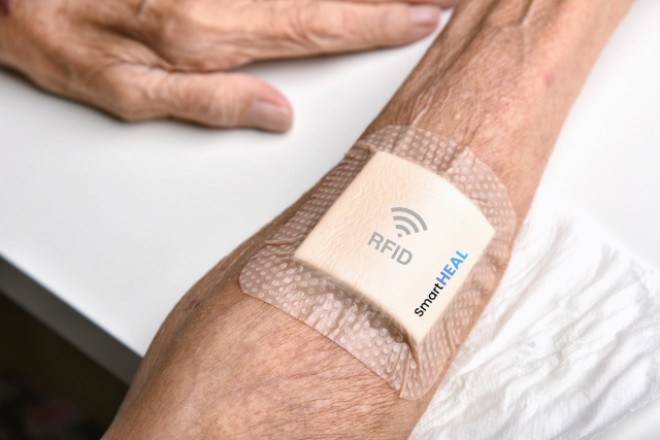Asmart sensor that detects how well a wound is healing, and a device that recycles plastic bottles into 3D printer filament, are the winners of this year’s international James Dyson Award. Each team receives £30,00 in prize money, that will go towards expanding and certifying their inventions in an effort to deliver them to the masses.
A runner-up prize of £5,000 went to a wearable replacement for the intravenous drip-pole apparatus, designed to improve patient mobility and comfort.
Commenting on this year’s competition, Sir James Dyson celebrated the zeal displayed by young people who “are passionate about improving the planet and solving environmental and medical problems”.
“There are people who grandstand over the issues they care about, but these young inventors are doing something more productive. They are diligently applying themselves to problem-solving using engineering, science, and ingenious design,” the billionaire British entrepreneur said.
A smart sensor for wounds
An affordable sensor that can be placed within the dressing or plaster on a wound is the brainchild of students from the Warsaw University of Technology, Poland. According to the team, SmartHEAL can be integrated with a bandage to assess the wound’s condition and prescribe the proper treatment. It works by using radio-frequency identification (RFID) communication systems and monitoring the pH of a wound.
By removing the need to adjust or take off the dressing, the sensor means patients or doctors can avoid disrupting the tissue, which can lead to infection. While generally poor wound healing not only causes tissue inflammation, but also necrosis (irreversible death of body tissue), and can result in severe illness or death. Current methods of assessing a wound rely on subjective scoring of colour, smell, temperature — or expensive laboratory biochemical tests.
The need for such a device could become more prevalent in the UK in the coming years. Currently, there are approximately 2.2 million people with a chronic wound, according to the British Journal of Family Medicine, and the ageing population will only see that number grow.
“We’ve all nervously peeled back a dressing or plaster to see what is happening underneath. SmartHEAL… provides doctors and patients with a key piece of data – the pH level – that can tell them how a wound is healing,” Sir James said.
“This can improve treatment and prevent infection, saving lives. I hope the award will give the team impetus to proceed down the tricky path towards commercialisation.”
Next up, the inventors plan to finish testing and start clinical trials on the SmartHeal, with the aim of distributing it by 2025.
The Polyformer won the sustainability award, which was introduced last year. Made by Canadian students from McMaster University, the L-shaped machine cuts plastic bottles into long strips that are then shaped into a thin fibre using heat and pressure (a process known as thermoforming). This 1.7mm filament is then passed through vents to cool before it is wrapped around a spool, ready to be inserted into a 3D printer.
Already in use in Rwanda, where creators Reiten (Yang) Cheng and Swaleh Owais first developed it, Polyformer has already been used to print signs, wrenches, and keychains by locals using leftover plastic bottles.
The two students developed the idea for the low-cost contraption after learning that Rwandans could not use 3D-printing services due to the high cost of importing filament to the country – and locals did not have access to the requisite infrastructure for recycling plastic bottles.
“By turning used plastic bottles into 3D printer filament, Polyformer helps reduce the amount of waste going to landfill, and provides a cheap and plentiful material for engineers and designers, especially in developing countries,” Sir James said.
“Their idea will provide new opportunities for other inventors to prototype their ideas using 3D printing.”
The entire Polyformer project is open-source, with others able to access building instructions and code on its Discord in order to contribute towards and modify the invention.
Inventors Cheng and Owais plan to use the Dyson award funds to bring more Polyformers to Makerspaces — places for creation within schools, libraries, and public spaces that include 3D printers and other collaborative tools — in Rwanda. They are also working on additional inventions aimed at expediting the polyforming process and joining multiple strands of filament to create longer pieces.
Since 2005, the James Dyson Award has given more than £1 million in prize money to more than 30 inventions from young engineers and scientists around the world.
Register now for one of the Evening Standard’s newsletters. From a daily news briefing to Homes & Property insights, plus lifestyle, going out, offers and more. For the best stories in your inbox.



























